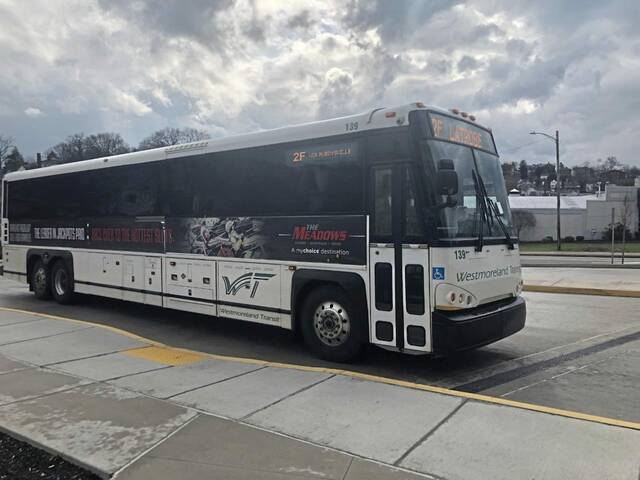https://mirror.triblive.com/opinion/chris-sandvig-to-win-federal-infrastructure-funding-southwestern-pa-cant-afford-to-wait/
Chris Sandvig: To win federal infrastructure funding, Southwestern Pa. can’t afford to wait

The bipartisan infrastructure law is a once-in-a-generation investment, offering a remarkable — and time-sensitive — opportunity for Western Pennsylvania’s public transit systems. With billions of new dollars ready to be invested by the federal government, there is an urgent need to act swiftly to secure these funds before the window closes in a few short years.
Like lots of federal funding, this bill will be allocated on a project-by-project basis. Agencies write applications for specific grants for specific projects. Our projects compete head-to-head with other regions and states. And that is bad news for us, because other regions have a major advantage: substantial, dedicated local funding.
One of the first things federal agencies ask when they rate a project is: how much are you putting in? A minimum of 50% of the cost of any transit project must come from non-federal sources. That’s where our handicap comes into play: Unlike many other states, current Pennsylvania law limits what we can do to support our transit systems.
We have a lot at stake. Pittsburgh Regional Transit (PRT), Westmoreland County Transit (WCT) and eight other partner agencies are indispensable. They currently serve more than three quarters of a million rides every week and drive our region’s economic vitality. A robust transit network ensures easy access to regional opportunities, attracting businesses and fostering economic growth. It is also a powerful tool for social equity, providing affordable and accessible transportation options for everyone, especially frontline workers, enabling access to essential services and to seize personal and professional growth opportunities. Finally, it’s a major factor for employers looking to locate and remain here — yes, even in a post-covid world.
There are a lot of great ideas to make our transit system work better, and two complementary initiatives have mapped out some really promising ways to get there. PRT’s NEXTransit and Southwestern Pennsylvania Commission’s SmartMoves Connections set forth ambitious yet achievable plans to create a thriving system, combining rail, bus and more. Some of the ways that Allegheny and Westmoreland counties in particular could benefit from federal funds include:
• Better integration between PRT and partners like WCT. Right now, counties like Westmoreland send commuter buses to and from Pittsburgh each day. Coordinated integration means that in-county service could expand while commuter service to our major job centers improves.
• Transfer hubs. Part of integration means making it easier and more convenient to transfer between different modes of transit. For example, Greensburg advocates want to build a hub near the Amtrak station.
• Faster, seamless movement from east-to-west, so someone can travel from Monroeville to the airport without ever having to leave their seat or getting stuck in tunnel traffic. This involves dedicated bus lanes along the Parkway and extended busways.
• More service, including in the Allegheny and the Monongahela valleys. Frequency and reliability are the backbone of a good transit system. Increased funding means more people can get where they need to go, when they need to get there.
• Cleaner, quieter buses. Zero-emission buses not only help the environment, they make it easier to breathe, helping our children and older neighbors stay healthy.
These investments would significantly improve riders’ lives and our communities. To make them a reality, we have to win more federal dollars. To do that, we need new tools to create substantial, dedicated local funding. To get that, elected officials in Harrisburg must allow communities like ours to generate revenue on our own, specifically designated for transit in a way that supplements existing state sources. Then, we can leverage these financial mechanisms to support capital projects, ensure ongoing solvency and improve the quality and frequency of service that define a successful region.
Unlocking federal funding’s full potential for transit requires a unified and concerted effort. Our leaders must keep their eyes on the prize: the vision of an integrated, regional transit network that benefits all residents. By working as a community with lawmakers in Harrisburg, we can enact legislation that not only maximizes federal resource competitiveness, but also allows municipalities to tap into new funding opportunities. This collaborative approach will unleash the full potential of our transit plans.
Let’s rally together, advocate for the necessary funding and create a transportation network that truly serves the needs of all. Other regions are already doing this. If Southwestern Pennsylvania doesn’t seize this opportunity, they will.
Chris Sandvig is founder and executive director of Mobilify, which advocates diverse, multimodal transportation networks connecting everyone in Southwestern Pennsylvania to economic and social opportunities. He lives in Morningside.
Copyright ©2025— Trib Total Media, LLC (TribLIVE.com)
